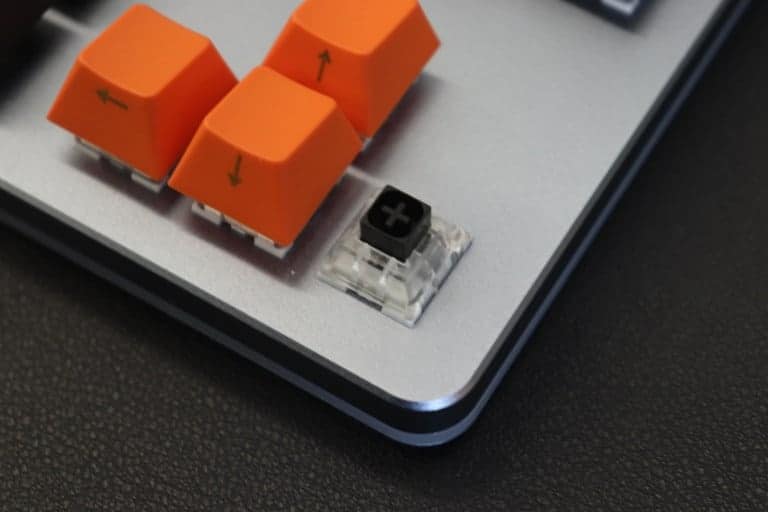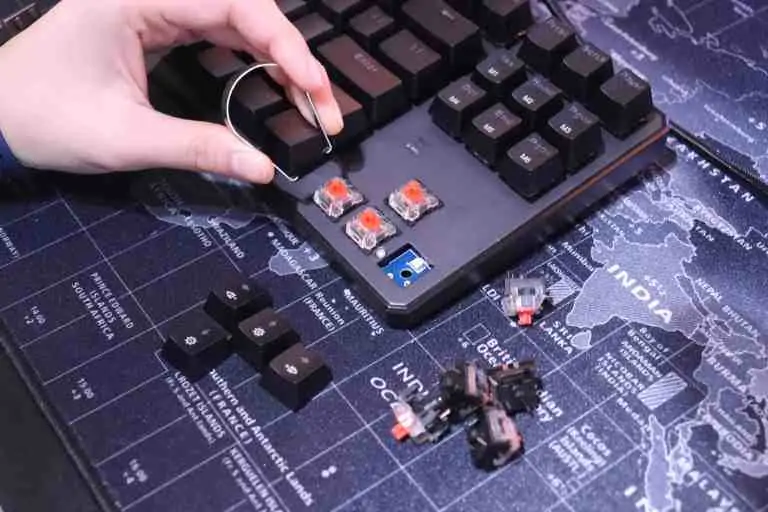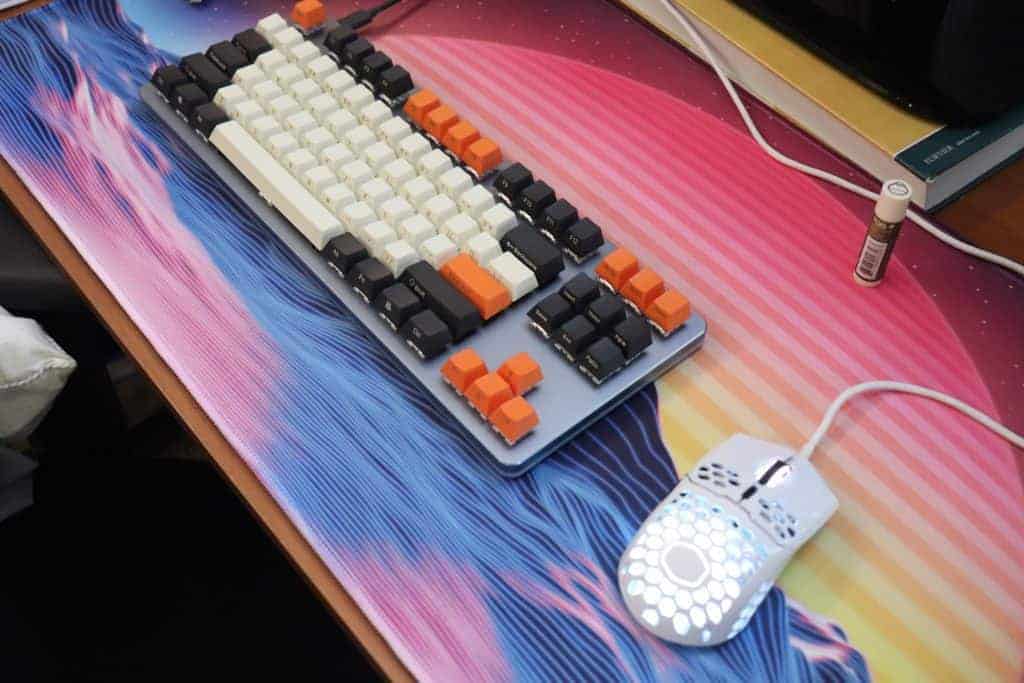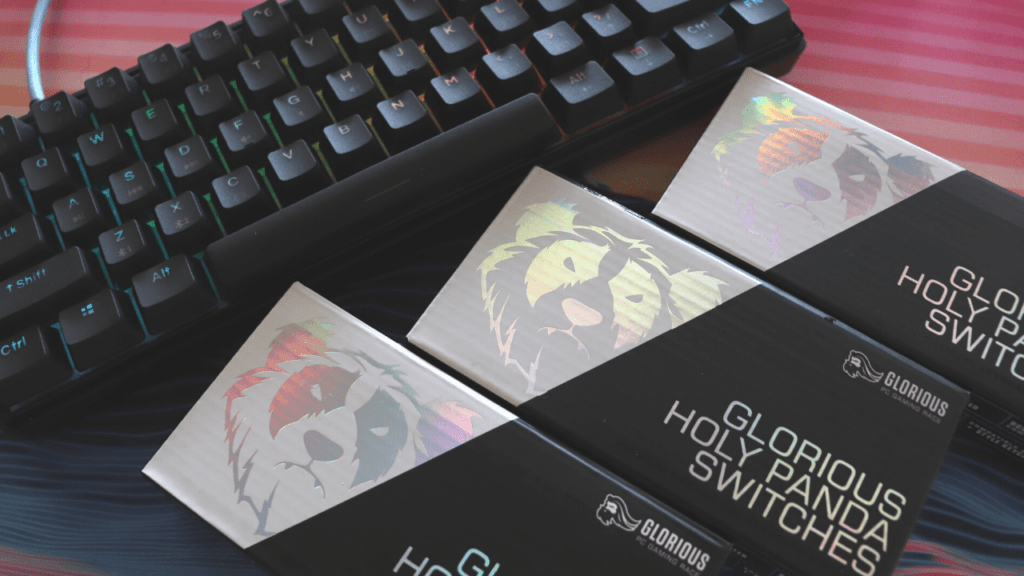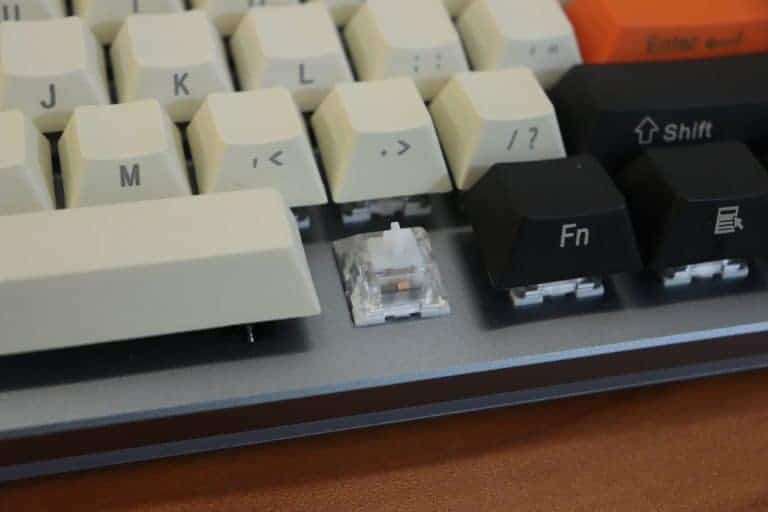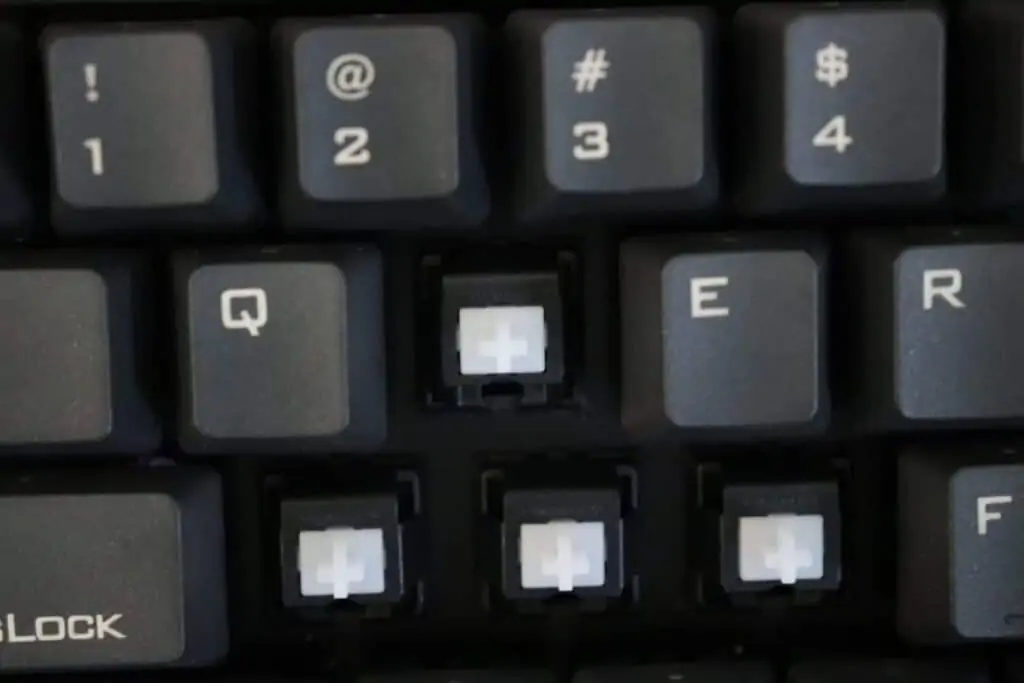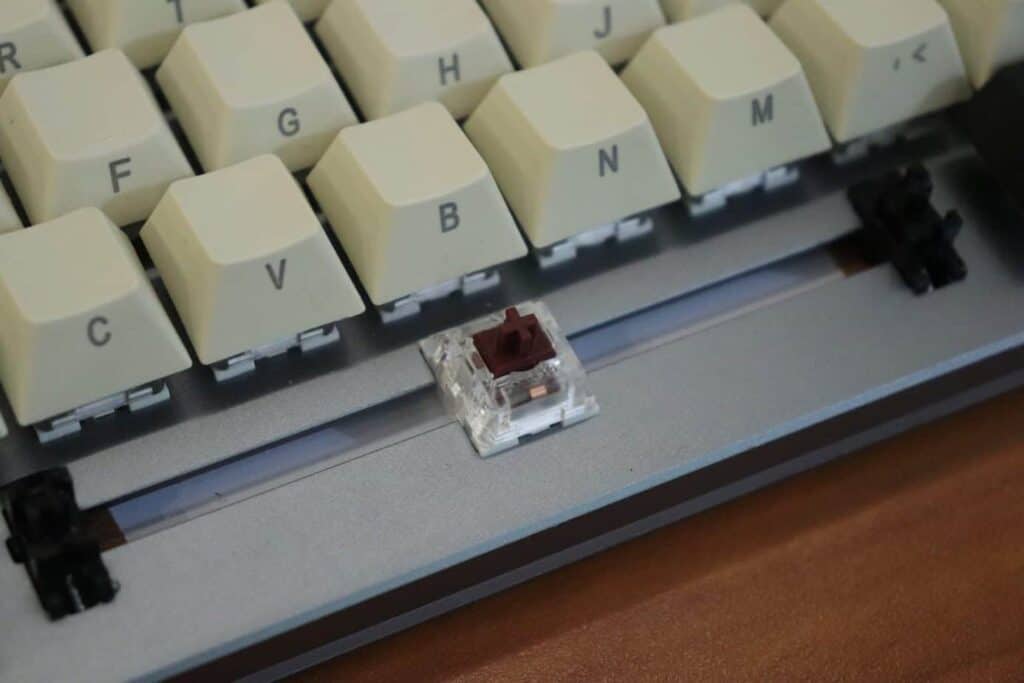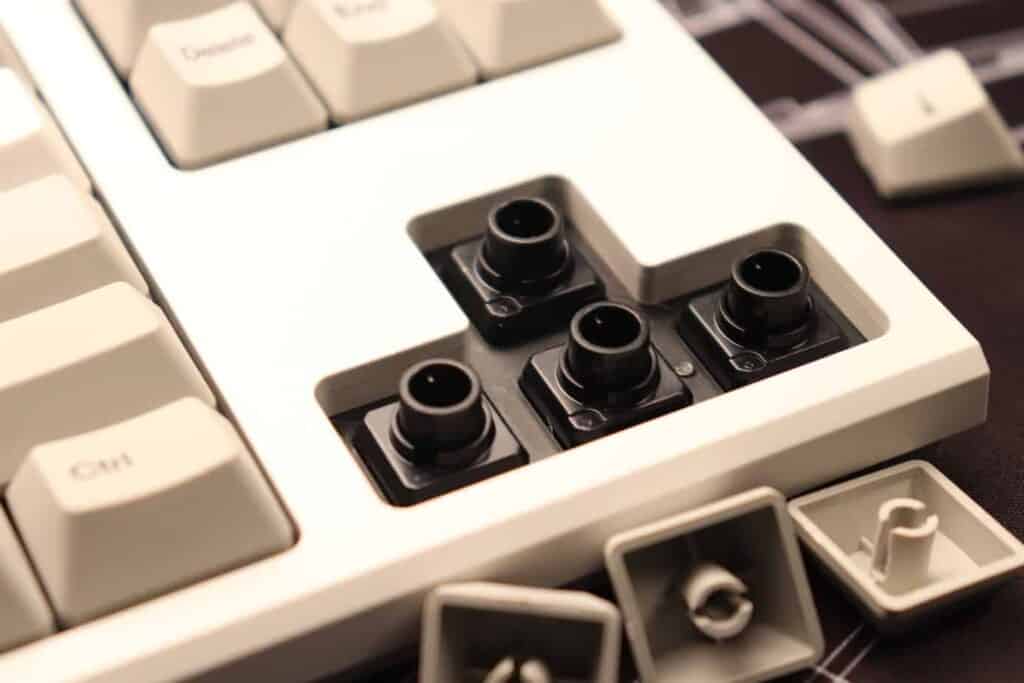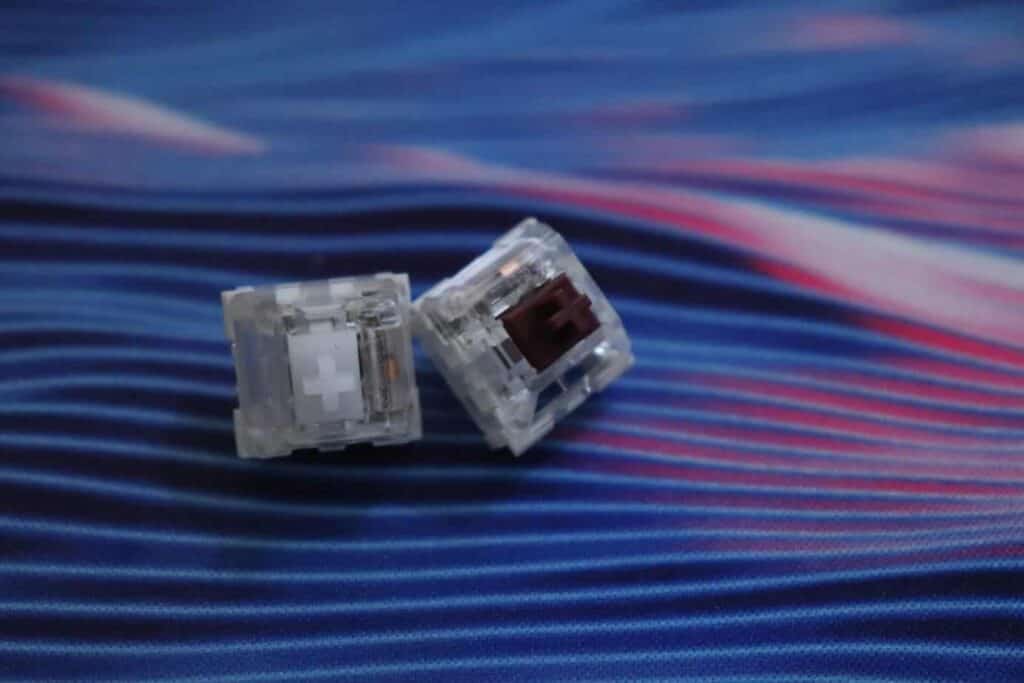Tactile switch что это
Linear vs Tactile vs Clicky Switches: A Helpful Guide
Understanding all the different mechanical keyboard switch types can be quite confusing.
Each company has its own lingo and names for each switch. Our goal is to cut through all the confusion and explain in simple terms what all of the different switch types are.
When you really break it down, there are only three types of switches: linear, tactile, and clicky.
The three main switch types, Linear vs Tactile vs Clicky:
Linear: Smooth and consistent keystroke with a quiet noise.
Tactile: A small bump on each keystroke with a moderate noise.
Clicky: A small bump on each keystroke with a loud click noise.
If you want a keyboard that allows you to try whatever switch you want, check out our list of the best hot-swappable keyboards.

Linear Switches: Smooth As Butter
What are Linear Switches?
Linear switches are a type of switch that focus on producing a smooth, consistent actuation without any tactile feedback.
Linear switches are great for people who don’t like the small bump experienced from tactile switches or the loud noises from clicky switches.
Linear switches are usually quiet, smooth, and consistent throughout the entire movement.
They are especially used by gamers as the consistent keystrokes allow for more precision in highly competitive games, you can check out our favorite switches for gaming.
Linear switches are also enjoyed by people who prefer smooth movements while typing.
Should You Get Linear Switches?
While linear switches are smooth and nice to use, there are some factors you need to consider before jumping aboard the linear switch train.
For those of you migrating from a normal keyboard, the transition can be difficult as you may bottom out the switches at first. This can lead to some mild finger pain and discomfort.
Once you get used to typing on the linear switches, they can be incredibly enjoyable and fun to use. Because of bottoming out issues though, we don’t recommend linear switches if it’s your first mechanical keyboard.
Linear switches and more specifically, linear speed switches, are often used in the gaming community to give themselves a slight competitive edge over their opponents.
If gaming is what you’ll primarily use your mechanical keyboard for, it may be worth it to explore some of the speed switch options from Cherry MX and Kailh.
If you want to learn more about linear switches, we have a post about our favorite linear switches of all time.
Tactile Switches: Bumpy and Satisfying
What Are Tactile Switches?
Tactile switches are a type of switch that focus on producing a tactile bump and a relatively quiet audible click with each keystroke.
Tactile switches offer great feedback when typing, so you know by the sound and feel everything is working properly and all of your keystrokes are getting logged. Not to mention they are satisfying and fun to use.
Should You Get Tactile Switches?
Tactile switches are fun to use and offer great feedback whilst typing, but there are some factors you should consider before purchasing a keyboard with tactile switches.
Tactile switches are a great switch for beginners or anyone new to mechanical keyboards. They will be undoubtedly an upgrade from your normal laptop keyboard or membrane style keyboard.
Anyone can pick up a keyboard with tactile switches and enjoy the satisfying bumps on each keystroke.
Tactile switches produce a bump of varying sizes (depending on the switch) and emit a small clicky sound.
The tactile switches are not quite as loud as a clicky switch, so you should be able to use them in a public setting without drawing too much attention to yourself with the noise.
We highly recommend a tactile switch for someone getting a mechanical keyboard the first time.
If you are more interested in tactile switches, we have a post about our top 5 tactile switches.
Clicky Switches: Loud and Bumpy
What Are Clicky Switches?
Clicky switches are a type of switch that focus on producing a tactile bump and loud audible click with each keystroke.
Loud and clicky switches offer great feedback when typing, so you know by the sound everything is working properly. Not to mention the sound is awesome.
Should You Get Clicky Switches?
While clicky switches are fun to use and offer the best feedback of any switch type, there are some factors you should consider before purchasing a keyboard with clicky switches.
The main factor you need to consider is the sound. If you’re working in a public space or even talking through a microphone the loud sound of the clicky switches can be irritating or distracting to those around you.
While the clicky sounds may be enjoyable for you, keep in mind, it is a double-edged sword.
If you’re working from home and have a dedicated space without too close of a proximity to anyone else, feel free to get a clicky switch and start typing away, there is nothing stopping you.
If you’re more interested in clicky switches, we have a write-up on our top 5 clicky switches.
Finding A Keyboard With Your Ideal Switch Type
If you’re looking for a keyboard that’s linear, clicky, or tactile – you’re in luck! Almost every keyboard out there has a switch option in each type.
Typically there are three switch color options: Brown (tactile), Red (linear), and Blue (clicky).
If every keyboard comes in most switch types, the question comes down to what size keyboard are you going to buy and for what price.
To help you out, check out some of our other articles:
What Other Features to Look for in a Switch?
There are certain features that you need to look for when picking out a switch for yourself and a lot of it comes down to personal preference.
The biggest factor is how the switch feels when typing and gaming, because ultimately that is what matters. Other factors include features such as longevity, actuation, spring force, and travel distance.
Depending on what you plan on using your keyboard for, you may want a different switch type that line-up with that function. We’ll break it down a bit more.
Longevity
If you’re spending a decent chunk of money on a mechanical keyboard, you’re going to want something that will last and work reliably for a long time.
I still have my first mechanical keyboard from 2014 and it’s still in great working condition, I just have other toys now, so I don’t always use it.
As mentioned before, to determine how reliable a switch is, you need to look at how long the switch is guaranteed to last for. Cherry MX has a 100 million keystroke guarantee, so they are highly reliable. Other switches usually are in the 50 million range.
Other issues to look out for are key chatter; where you press the key once, but it gets registered twice.
This can be incredibly frustrating whilst typing as you constantly need to go back and correct the input at no fault from your own. Definitely check if your switch has this issue before committing.
Spring Force
If you tend to be a bit heavy handed when typing, a heavier spring could be a great option for you.
The heavier springs offer support and resistance to your fingers, so if you slam your fingers down on the keyboard you are still able to type comfortably.
On the other hand, if you have smaller hands and/or type very lightly, a lighter spring may be better because a heavier spring will tire your fingers out. It’s always a good idea to try and test several different switches out before buying your keyboard to figure out what feels the best for you.
Travel Distance
Travel distance refers to how far your fingers travel with each keystroke. The amount of travel distance is variable based on the switch type and model.
For example, “speed” or “low-profile” switches tend to have shorter travel distances.
The benefits of these types of switches include their more compact size, which makes them lighter and less bulky, and the fact that they can give a slight increase in performance with gaming since in theory, your keystroke will register a millisecond faster.
Normal switches tend to have a longer travel distance and are much more enjoyable to type on. So there is definitely a tradeoff when looking at a short travel distance switch
What do all of the Switch Colors Mean?
| Switch Color | Description |
| Red | Linear switch with light resistance. |
| Yellow | Linear switch with medium resistance. |
| Black | Linear switch with heavy resistance. |
| Brown | Tactile switch with medium resistance. |
| Clear | Tactile switch with heavy resistance. |
| Blue | Clicky switch with medium resistance. |
| Green | Clicky switch with heavy resistance. |
When checking out different keyboards, you often hear different colors being thrown around when referencing the switch (red, blue, brown, black, etc). What does all of that mean?
Well, Cherry MX started the trend of naming different switch designs with different colors based on switch type, how heavy the springs are, and actuation differences.
For example, the Cherry MX Reds refer to linear medium-resistant switches and Cherry MX Browns refer to tactile medium-resistant switches.
Other companies started to copy the same naming style so people would automatically understand what type of switches they are trying to sell as well. Let’s break down each color and what that usually means for that switch.
Why Get a Mechanical Keyboard?
Many people out there still use the standard chiclet or membrane style keyboard, but as mechanical keyboards get more popular, you are seeing a ton of people transition to mechanical. Seeing as how they’re quite a bit more expensive, why are they worth it?
Better Build Quality
Each key on a mechanical keyboard contains a switch underneath. The switch is composed of spring inside of a housing.
Upon pressing a key, the user receives some resistance from the spring and once the key is fully pressed, the keyboard will make a clicking sound! It sounds simple, but this design provides the ultimate tactile feedback for the user.
It is incredibly satisfying to sit down and click away, for every click is a letter typed.
Switch Customization
You can customize the clicking sound and spring resistance through a variety of different switch types, some louder than others.
If you want everyone in the office to hear how hard you’re working at your keyboard, there’s a switch for that. If you want to be stealthily typing away in the corner of a coffee shop, there’s a switch for you too.
If you’re more interested in the different switch types, you can read up on the different types of switches here.
N-Key Rollover
Mechanical keyboards also fix the issue of rollover, one of the common problems of a traditional keyboard. Rollover is the issue of keystrokes not registering when multiple keys are pressed at once.
You can look up the specs for each keyboard specifically by looking at the n-rollover, where n is the number of keys that can get pressed simultaneously.
Durability
On top of the benefits of tactile feedback, mechanical keyboards are also highly durable. The switches have a much higher lifespan than a membrane keyboard.
The switches are usually rated for over 50 million keystrokes (sometimes up to 100 million), while a membrane keyboard is only rated for 10 million. Whether you’re a gamer, blogger, programmer, or just someone looking for an upgrade, you cannot go wrong with a mechanical keyboard.
Conclusion
There are some major differences between linear, tactile, and clicky switches. Whether you want a smooth and quiet switch, bumpy and normal sounding, or bumpy and super loud, there is a switch out there for you.
We hope we were able to remove some of the confusion surrounding all of the different switch types and colors.
There are many factors that go into picking out a switch such as longevity, spring force, and travel distance, with each being fine-tuned to fit your preferences.
Picking the correct switch can make your typing experience infinitely more enjoyable, so make sure to choose wisely.
If you want some awesome mechanical keyboard recommendations, check out our favorite mechanical keyboard of all time. These keyboards are absolute killers, and we can’t recommend them enough.
Jake has been an avid mechanical keyboard user for the past six years. He has a background in Mechanical Engineering and wants to apply his expertise to break down how mechanical keyboards and other tech work to show the world all of the cool aspects of the hobby.
Recent Content
If you’re looking to build a mechanical keyboard anytime soon, the GMMK Pro might be the option you’re looking for. With enough features to make an enthusiast blush, the GMMK Pro is a strong.
The EVGA Z15 offers a few features that have never been found that price range before. As a new competitor to the gaming keyboard market, let’s see if this keyboard has what it takes to succeed.
About Us
Affiliate Disclosure
We may earn a commission for purchases using our links. Know more about our affliate disclosure terms.
Best Tactile Switches for your Keyboard
The perfect tactile switch can be tough to find.
We’re going to help you pick out a tactile switch by laying out a list of our favorites based on sound, feel, and performance.
We have tested dozens and dozens of different switches to pin down that perfect tactile switch. Perfect for typing.
Here’s a quick overview of the best tactile switches.
We’ll dive deeper into why we chose each tactile switch and ranked them the way we did.
We will also go over their specifications, how long they last, and include our opinions on the way they feel and sound.
1. Glorious Panda: The Snappiest Tactile Switch
Glorious Pandas are a switch that was created out of controversy as a way to jump onto the Holy Panda switch bandwagon.
By offering a very similar switch at a much more affordable price, Glorious gives you a truly unique feeling switch that doesn’t cost an arm and a leg.
The tactile bump on the Glorious Panda is unlike any other tactile switch I’ve used (except the Holy Pandas), it is incredibly snappy and makes a very unique sound.
You can check out a sound test of the keyboard here.
I highly recommend this switch to those that want a very strong tactile bump that is more defined than other switches on the list.
You can get the Glorious Panda on the official website for a good price.
2. Durock T1 Switches: All-Around Tactile Switch
Durock switches are an excellent pick if you’re looking for a tactile switch with a nice round and heavy bump.
Compared to Glorious switches, the Durock switches will tend to feel less snappy and should produce less noise overall. If you’re looking for a pronounce tactile bump that doesn’t feel too crazy, the Durock T1’s may find their way into your keyboard.
This switch is quite affordable for what you get.
We’ve found that applying a little bit of lubricant and switch films greatly improves the feel. The switch films can reduce wobbling significantly while the lubricant eliminates scratchiness and improves the sound.
3. Boba U4 Tactile Switches: The Silent Option
If you’re looking for a silent switch option that is super stealthy, look no further than the Boba U4. The silicone dampeners attached to the stem significantly reduce the sound output of this switch.
Just beware, the silent feature does come with a downside. The switches won’t feel quite as satisfying without the hard bottom-out and may feel mushy on impact.
A benefit of silent switches is the added ergonomic bonus of a softened impact on your fingers when typing. You can expect to feel less finger pain during long typing sessions.
But overall, if you’re looking for a silent switch, this is the option we recommend.
4. Boba U4T Switches: The Thocciest
Boba U4T switches are all about producing a nice “thocc” sound on impact.
Without the silicone dampeners found on the original Boba U4 switch, you should get a much more satisfying typing experience, however you don’t get the benefits of a quiet switch.
The tactile bump is very pronounced, in fact, it’s one of the most tactile feeling switches on the market.
For this reason, the Boba U4T’s take a high place in the tactile switch ranking.
5. Halo Clear: A Long Smooth Bump
Halo Clears are another great tactile switch. The Clears have a focus on a “pre-loaded” spring.
The pre-loaded spring puts the tactile bump at the start of the keystroke, so you can rest your fingers on the keys without the switches actuating.
Once you get past the tactile bump, the resistance lowers and then increases towards the end of the keystroke.
Compared to other tactile switches, the Halo Clears have a heavier feel to them with a 65g tactile force and a 78g bottom-out force.
The Halo Clears have a long lifespan of 80 million keystrokes and a travel distance of 4mm, which is pretty standard for a mechanical keyboard switch.
You can either buy the Halo Clear switch separately on Amazon or included in the Drop ALT which is one of our favorite mechanical keyboards.
6. Cherry MX Brown: A Small Bump
The Cherry MX Brown are the most standard tactile switch you can buy.
While many complain the tactile bump is almost non-existent, most will enjoy the typing experience as it feels very familiar.
Being one of the most common switches available, you should be able to find them on quite a few different pre-built keyboards.
Cherry MX switches are the king when it comes to durability and reliability. They are rated for up to 100 million keystrokes and go through rigorous quality testing before reaching the customer.
Cherry MX switches have a travel distance of 4mm which will give a very normal feeling keystroke.
You can find the Cherry MX Brown on the Kebo Store for a low price.
7. Cherry MX Clear: Heavy and Bumpy
The Cherry MX Clear is the little sister to the Cherry MX Brown, except it comes much heavier and has a more pronounced bump. The tactility feels very rounded and not sharp by any means.
If you enjoy a heavy typing experience, the Cherry MX Clear could be a great option for you. And with the Cherry MX name backing it, you know the durability is going to be excellent.
Being less common than the Cherry Brown, you’ll usually have to buy the switch separately and install them into a keyboard yourself.
8. Kailh Speed Copper: Light-Actuating Switch
For those of you looking for a lighter, faster actuating tactile switch, the Kailh Speed Copper could be an awesome pick for you.
The tactile bump is slightly less pronounced, but it still offers some great tactile feedback.
These would be an excellent option for someone who does a lot of gaming, as the Speed Copper switch has a slightly shorter travel distance which can save you milliseconds in competitive games that require a lightning-fast reaction time.
The total travel distance is 3.5mm as compared to the 4mm travel distance of the Cherry MX switches.
The 0.5mm difference may not seem like a big deal, but the actual point at which it registers the keystroke is 1.1mm.
So, there is a big difference in the distance traveled before activating the key.
The Kailh Speed switches are rated for 70 million keystrokes, so while not at durable as Cherry MX, they are still quite long-lasting. You can find the Kailh Speed Copper for sale on the Kono Store.
9. Topre Switch: Electro-Capacitive Design
Topre switches are a little different than the normal tactile switch, instead they are electrostatic, capacitive keyboard switches that have the feel of a rubber dome keyboard with all the benefits of a mechanical switch such as more tactility, less noise, and a non-mushy bottom-out.
They are available on a limited number of keyboards. Topre switches are similar to Cherry MX Browns with more “thonk” and crispier tactile feedback.
Topre switches can be a lot of fun to use and offer a very unique typing experience.
You can find them on keyboards such as the Happy Hacking keyboard. If you’re interested, you can read more about them though this post.
10. Outemu Brown Switch: A Super Budget Option
If you’re on a low budget, the cheapest switches on the market are usually from Outemu.
The Outemu Brown switch was able to sneak into this list at the very end due to the fact that the switch is super affordable. And although the price is low, the feel is not too bad compared to other popular options.
The main downside to Outemu Brown switches, is the build quality tends to be a little lacking. You can expect the switches to feel inconsistent switch-to-switch and the lifespan may not get you very far.
But if the name of the game is to save money, Outemu can be a great option.
Should You Get a Tactile Switch?
Tactile switches are fun to use and offer great feedback whilst typing, but there are some factors you should consider before purchasing a keyboard with tactile switches.
Tactile switches are a great switch for beginners or anyone new to mechanical keyboards. They will be undoubtedly and upgrade from your normal laptop keyboard or membrane style keyboard.
Anyone can pick up a keyboard with tactile switches and enjoy the satisfying bumps on each keystroke.
When typing tactile switches produce a bump of varying sizes (depending on the switch) and emit a small clicky sound.
The tactile switches are not quite as loud as a clicky switch, so you should be able to use them in a public setting without drawing too much attention to yourself with the noise.
We highly recommend a tactile switch for someone getting a mechanical keyboard the first time.
What Are Tactile Switches?
I’ll briefly explain some of the lingo commonly thrown around in the mechanical keyboard world because if you’re totally new it can get quite confusing.
A mechanical keyboard switch refers to the switch under each key that supports your finger through the keystroke and registers each entry.
On mechanical keyboards, each key has its own dedicated switch, which makes for some high quality and extremely durable keyboards that have some fancy features such as N-key rollover (being able to press multiple keys and once and everything will register).
Tactile switches are a type of switch that focus on producing a tactile bump and a relatively quiet audible click with each keystroke.
There are other switch types as well (linear and clicky) but for now, we will focus primarily on tactile.
Tactile switches offer great feedback when typing, so you know by the sound and feel everything is working properly and all of your keystrokes are getting logged. Not to mention they are incredibly satisfying and fun to use.
Conclusion
All right, that does it for our list of favorite tactile mechanical keyboard switches. We went over what exactly a tactile switch is, what you should look for in a tactile switch and our picks.
Our favorite tactile switch is the Glorious Panda for the reason that it’s quite affordable, easy to purchase, and offers a unique typing experience.
Picking the right tactile switch can be difficult as there are just so many different options out there.
We recommend ordering a switch tester and testing out several different switches at once because you don’t want to get stuck with a switch you don’t enjoy.
You want a switch that feels amazing, sounds great, and doesn’t break your budget.
Thanks for reading and happy typing!
Jake has been an avid mechanical keyboard user for the past six years. He has a background in Mechanical Engineering and wants to apply his expertise to break down how mechanical keyboards and other tech work to show the world all of the cool aspects of the hobby.
Recent Content
If you’re looking to build a mechanical keyboard anytime soon, the GMMK Pro might be the option you’re looking for. With enough features to make an enthusiast blush, the GMMK Pro is a strong.
The EVGA Z15 offers a few features that have never been found that price range before. As a new competitor to the gaming keyboard market, let’s see if this keyboard has what it takes to succeed.
About Us
Affiliate Disclosure
We may earn a commission for purchases using our links. Know more about our affliate disclosure terms.

